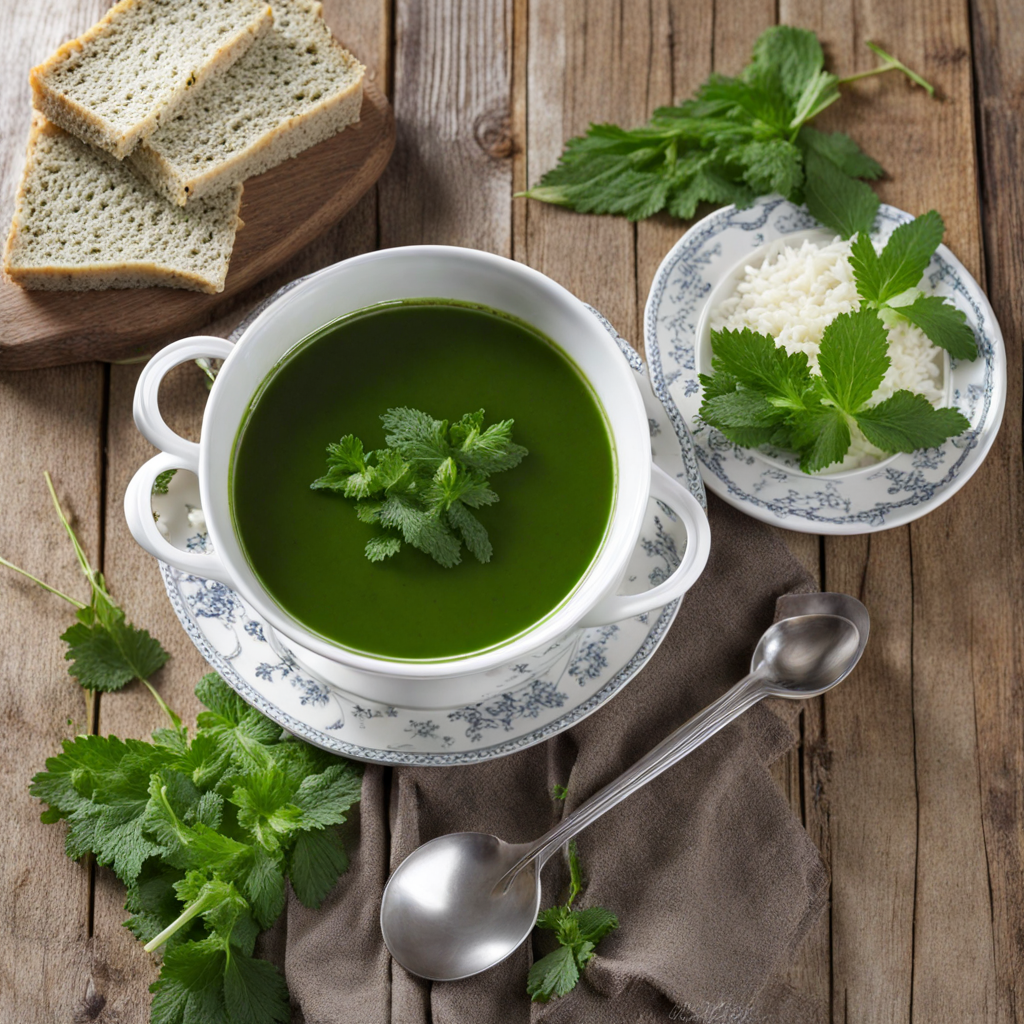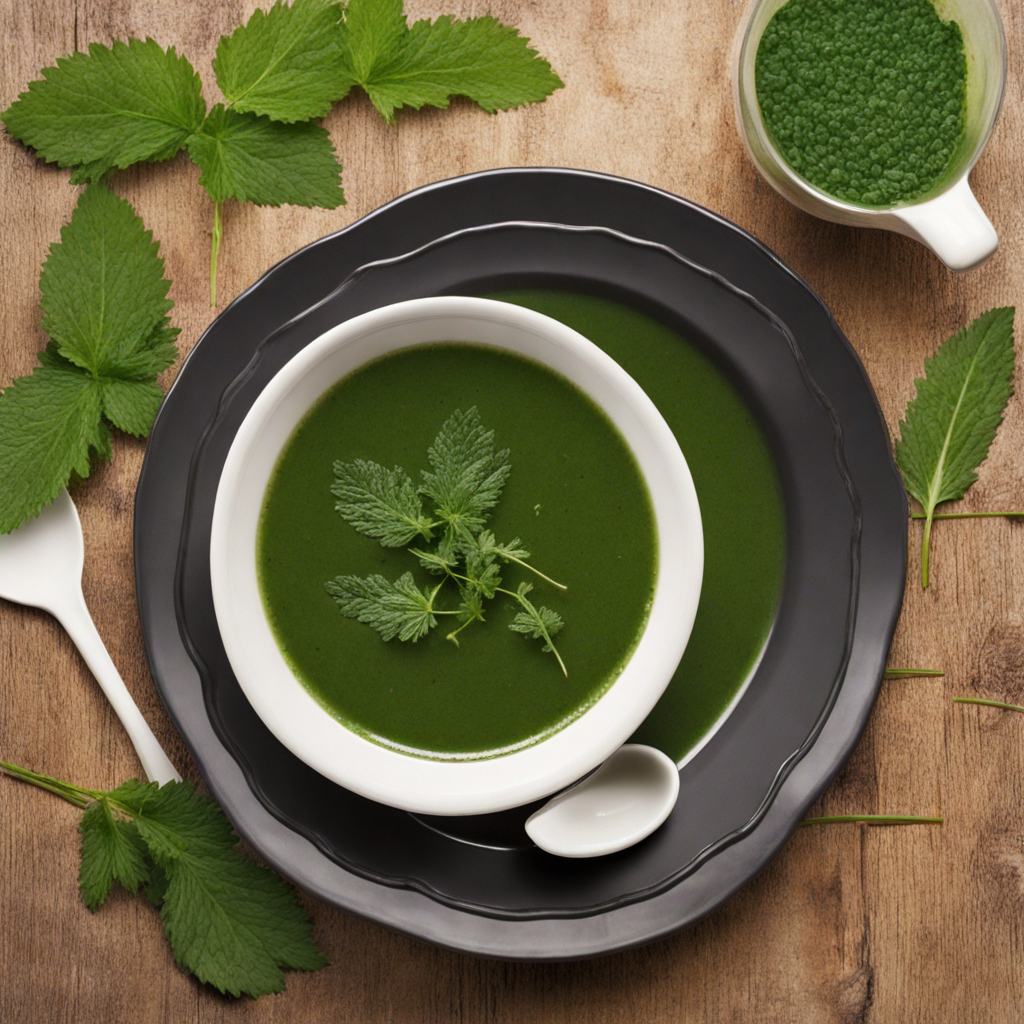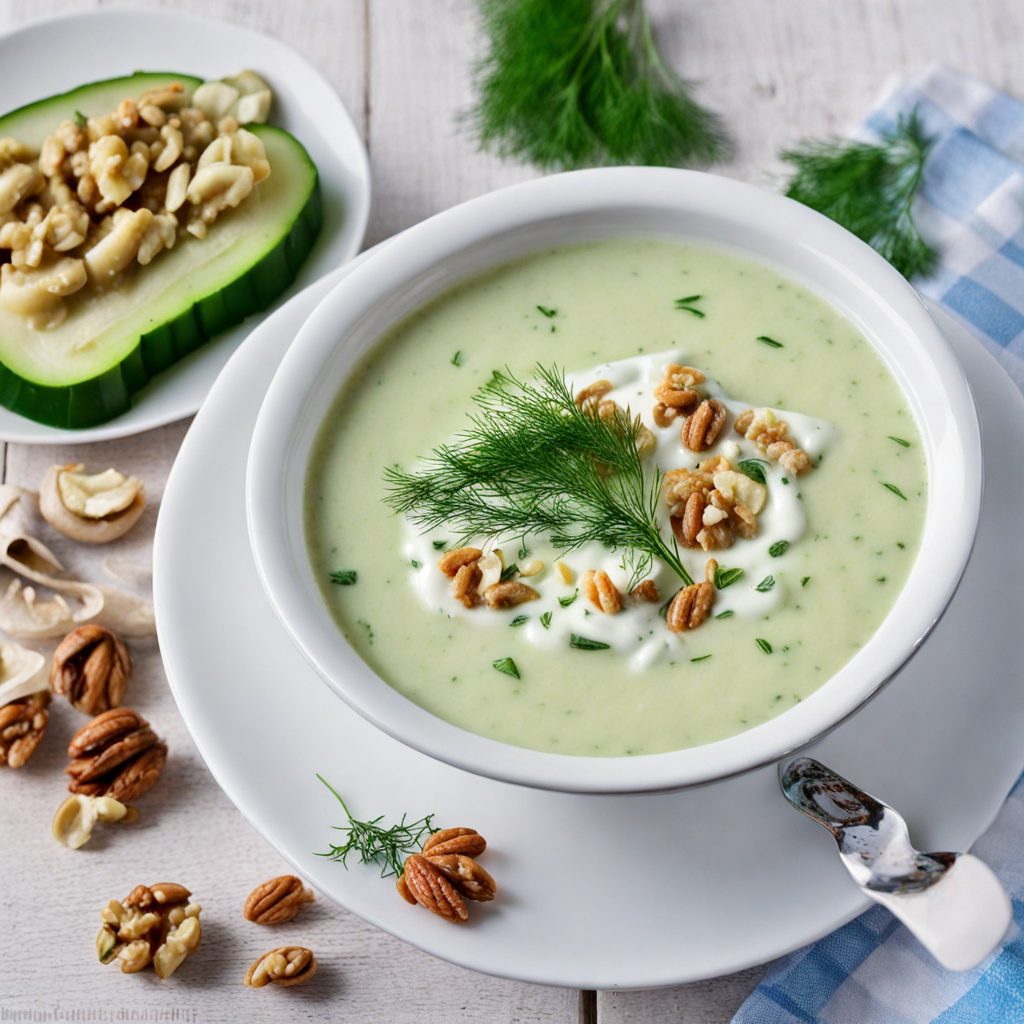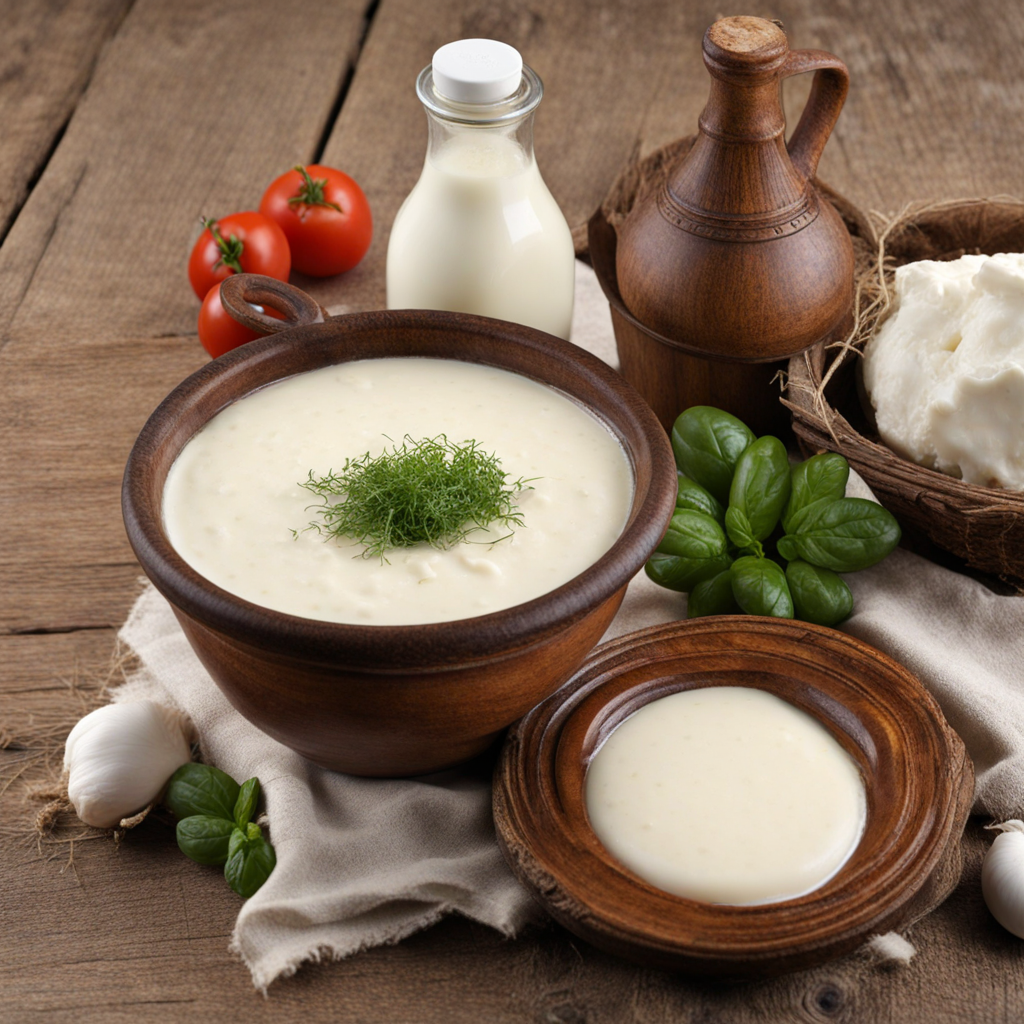Nettle Soup
Nettle Soup is a traditional Bulgarian dish that embodies the essence of springtime and foraging. Made primarily from young nettle leaves, which are known for their vibrant green color and unique flavor, this soup offers a delightful blend of earthy and slightly peppery notes. The nettles are often combined with ingredients like potatoes, onions, and carrots, creating a wholesome, hearty base that complements the delicate taste of the nettles. The soup is usually enriched with vegetable or chicken broth, adding depth and warmth to the overall flavor profile. In Bulgaria, nettle soup is not only appreciated for its taste but also for its nutritional benefits. Nettle leaves are packed with vitamins A, C, and K, as well as essential minerals. When cooked, the stinging properties of the nettles dissipate, leaving behind a tender texture that melds beautifully with the other ingredients. The addition of a splash of cream or a dollop of yogurt before serving adds a luscious finish, enhancing the soup's richness and making it a comforting dish, especially during the cooler months. This soup is often garnished with fresh herbs such as dill or parsley, adding a burst of color and freshness. Served hot, nettle soup is a staple in many Bulgarian households, symbolizing the connection to nature and the joy of seasonal ingredients. For those seeking to discover new flavors, nettle soup offers a unique culinary experience that showcases the beauty of simple, yet flavorful, ingredients found in Bulgarian cuisine.
How It Became This Dish
The History of Коприва шкембе (Kopriva Shkembe): A Culinary Delight from Bulgaria #### Introduction Kopriva шкембе, or nettle tripe soup, is a cherished dish in Bulgarian cuisine that exemplifies the country’s rich culinary heritage. This dish marries the earthy flavor of nettles with the comforting heartiness of tripe, creating a unique and flavorful experience that is steeped in tradition. Its history is not only a testament to the resourcefulness of the Bulgarian people but also highlights the cultural significance of seasonal ingredients and the communal aspects of food preparation. #### Origins The use of nettles in cooking can be traced back to ancient times, with archaeological evidence suggesting that humans have consumed this plant for thousands of years. Nettle (Urtica dioica) is a wild green that flourishes in various regions, including Europe, Asia, and North America. It has long been recognized for its nutritional value, rich in vitamins A, C, K, and several B vitamins, as well as minerals like iron and calcium. In Bulgaria, as in many parts of Eastern Europe, nettles are considered a springtime delicacy, symbolizing renewal and vitality after the long winter months. Tripe, on the other hand, has a storied history across many cultures. It is the edible lining of the stomachs of various farm animals, most commonly cows. In Bulgaria, tripe has been utilized in traditional dishes for centuries, reflecting a culinary practice that values whole-animal cooking. The use of tripe is indicative of a culture that honors frugality—maximizing the use of every part of the animal while minimizing waste. Kopriva шкембе likely emerged as a rural dish among Bulgarian shepherds and farmers who relied on the seasonal availability of ingredients. As nettles would sprout in early spring, they provided an ideal accompaniment to the heartiness of tripe, resulting in a dish that was not only nourishing but also a celebration of the season's bounty. #### Cultural Significance In Bulgaria, food is deeply intertwined with cultural identity, and dishes like коприва шкембе encapsulate the spirit of togetherness and communal living. Traditionally, meals were prepared in large quantities to be shared among family and friends, fostering a sense of community. The preparation of коприва шкембе often becomes a social event, where families gather to cook and enjoy the dish together, reinforcing familial bonds and cultural continuity. The dish is also emblematic of the Bulgarian philosophy of food, which emphasizes simplicity and the use of local ingredients. The combination of nettles and tripe is not just about flavor; it represents a connection to the land and an appreciation for what nature offers. In many Bulgarian villages, it is common for families to forage for wild greens, such as nettles, as a way to connect with their environment and preserve traditional practices. Moreover, коприва шкембе is often enjoyed during significant celebrations and feasts, marking important occasions in the community. Its presence on the table during holidays or family gatherings adds to its cultural weight, as it evokes a sense of nostalgia and continuity with past generations. #### Development Over Time As Bulgarian society evolved through the centuries, so too did its culinary practices. The Ottoman Empire's influence in the region introduced new spices and cooking techniques, which began to blend with traditional Bulgarian flavors. While kopriva шкембе remained a staple, various regional adaptations emerged, incorporating local herbs and spices that reflected the unique culinary landscape of different areas. In the 20th century, the rise of urbanization and industrialization began to alter food preparation practices. Traditional dishes like коприва шкембе faced challenges as the convenience of processed foods took precedence in urban settings. However, there has been a resurgence of interest in traditional cooking methods and local ingredients, particularly in recent decades. This revival is often linked to a broader movement celebrating slow food, sustainability, and a return to roots in culinary practices. As more Bulgarians embrace their culinary heritage, коприва шкембе has experienced a renaissance. Chefs and home cooks alike are reconnecting with traditional recipes, often experimenting with modern twists while honoring the dish's roots. The celebration of seasonal foods has led to increased interest in foraging for natural ingredients like nettles, which are now appreciated not just for their taste but also for their health benefits. #### Contemporary Relevance Today, коприва шкембе can be found in homes and restaurants across Bulgaria, often served with a dollop of yogurt or a sprinkle of fresh herbs to enhance its flavor. The dish embodies the essence of Bulgarian cuisine—a harmonious blend of simplicity, community, and respect for nature. It stands as a reminder of the importance of local ingredients and traditional cooking methods in a rapidly changing world. In contemporary Bulgaria, there is a growing awareness of the importance of preserving culinary traditions as part of cultural heritage. As food becomes more globalized, dishes like коприва шкембе serve as anchors to local identities and history. Food festivals and culinary events often feature traditional dishes, allowing both locals and tourists to experience the rich tapestry of Bulgarian gastronomy. Furthermore, the increasing interest in healthy, natural foods has brought коприва шкембе back into the spotlight. The nutritional benefits of nettles, combined with the protein-rich nature of tripe, position the dish as a wholesome option for those seeking nutritious meals. This aligns with a broader trend of embracing traditional diets as part of a healthy lifestyle. #### Conclusion Kopriva шкембе is more than just a dish; it is a reflection of Bulgaria's cultural identity, history, and communal values. Its origins rooted in rural practices highlight the resourcefulness of the Bulgarian people in utilizing seasonal ingredients while minimizing waste. The dish's evolution over time—from a humble peasant food to a celebrated symbol of culinary heritage—captures the essence of Bulgaria's rich gastronomic landscape. As Bulgaria continues to navigate the complexities of modern life, коприва шкембе stands resilient, a testament to the enduring power of tradition in shaping culinary practices. It invites us not only to enjoy its unique flavors but also to appreciate the stories and connections that each bowl holds, bridging the past with the present and ensuring that the legacy of this beloved dish endures for generations to come.
You may like
Discover local flavors from Bulgaria







